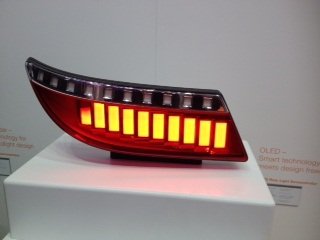The Flex-o-Fab project demonstrated a flexible OLED prototype produced using a roll-to-roll process
The â¬11-million 3-years European Flex-o-Fab project was launched in January 2013 with an aim to help commercialize flexible OLEDs. The researchers working on this project have now successfully fabricated a flexible OLED prototype in a roll-to-roll (R2R) process.

The OLED prototype (shown above) was produced on a PET plastic film, and the researchers say this is a significant breakthrough on the way to commercial production. It uses technologies developed as part of the Flex-o-Fab project in addition to the Holst Centre's own high-performance flexible barriers for organic electronics.






